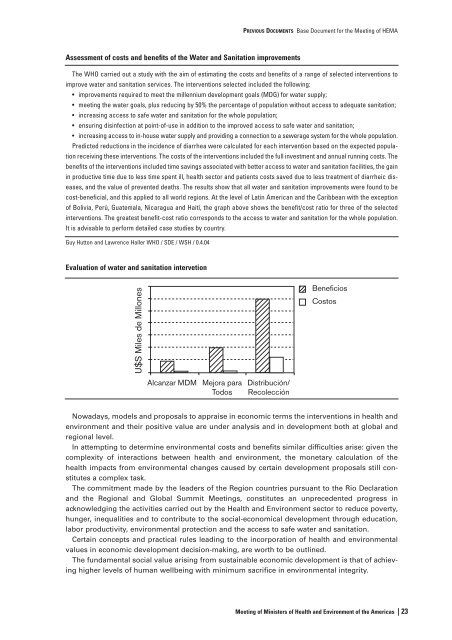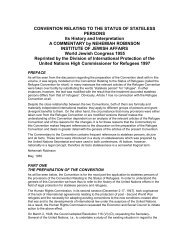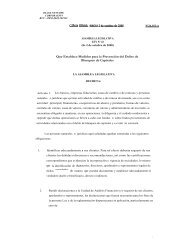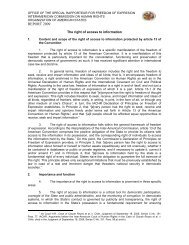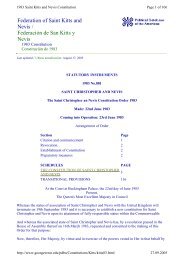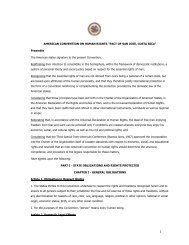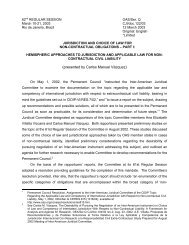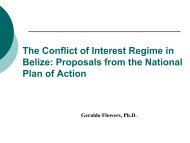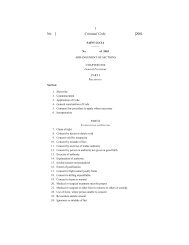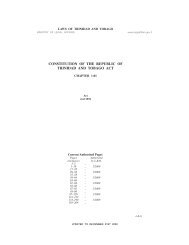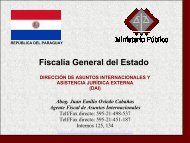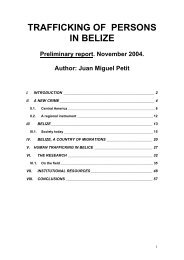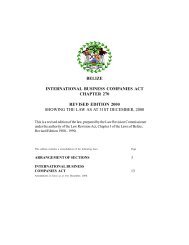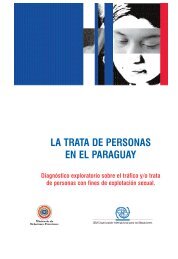(HEMA) Initiative. - OAS
(HEMA) Initiative. - OAS
(HEMA) Initiative. - OAS
You also want an ePaper? Increase the reach of your titles
YUMPU automatically turns print PDFs into web optimized ePapers that Google loves.
PREVIOUS DOCUMENTS Base Document for the Meeting of <strong>HEMA</strong><br />
Assessment of costs and benefits of the Water and Sanitation improvements<br />
The WHO carried out a study with the aim of estimating the costs and benefits of a range of selected interventions to<br />
improve water and sanitation services. The interventions selected included the following:<br />
• improvements required to meet the millennium development goals (MDG) for water supply;<br />
• meeting the water goals, plus reducing by 50% the percentage of population without access to adequate sanitation;<br />
• increasing access to safe water and sanitation for the whole population;<br />
• ensuring disinfection at point-of-use in addition to the improved access to safe water and sanitation;<br />
• increasing access to in-house water supply and providing a connection to a sewerage system for the whole population.<br />
Predicted reductions in the incidence of diarrhea were calculated for each intervention based on the expected population<br />
receiving these interventions. The costs of the interventions included the full investment and annual running costs. The<br />
benefits of the interventions included time savings associated with better access to water and sanitation facilities, the gain<br />
in productive time due to less time spent ill, health sector and patients costs saved due to less treatment of diarrheic diseases,<br />
and the value of prevented deaths. The results show that all water and sanitation improvements were found to be<br />
cost-beneficial, and this applied to all world regions. At the level of Latin American and the Caribbean with the exception<br />
of Bolivia, Perú, Guatemala, Nicaragua and Haití, the graph above shows the benefit/cost ratio for three of the selected<br />
interventions. The greatest benefit-cost ratio corresponds to the access to water and sanitation for the whole population.<br />
It is advisable to perform detailed case studies by country.<br />
Guy Hutton and Lawrence Haller WHO / SDE / WSH / 0.4.04<br />
Evaluation of water and sanitation intervetion<br />
Nowadays, models and proposals to appraise in economic terms the interventions in health and<br />
environment and their positive value are under analysis and in development both at global and<br />
regional level.<br />
In attempting to determine environmental costs and benefits similar difficulties arise: given the<br />
complexity of interactions between health and environment, the monetary calculation of the<br />
health impacts from environmental changes caused by certain development proposals still constitutes<br />
a complex task.<br />
The commitment made by the leaders of the Region countries pursuant to the Rio Declaration<br />
and the Regional and Global Summit Meetings, constitutes an unprecedented progress in<br />
acknowledging the activities carried out by the Health and Environment sector to reduce poverty,<br />
hunger, inequalities and to contribute to the social-economical development through education,<br />
labor productivity, environmental protection and the access to safe water and sanitation.<br />
Certain concepts and practical rules leading to the incorporation of health and environmental<br />
values in economic development decision-making, are worth to be outlined.<br />
The fundamental social value arising from sustainable economic development is that of achieving<br />
higher levels of human wellbeing with minimum sacrifice in environmental integrity.<br />
Meeting of Ministers of Health and Environment of the Americas | 23


